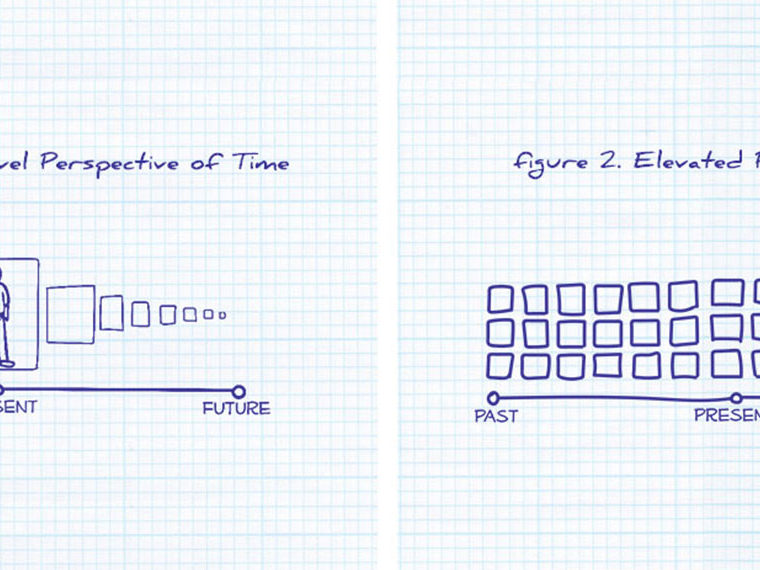Hengchen Dai finds that hitting the reset button can help those who have recently struggled, but erodes the motivation and execution of top performers
Separating our flawed past from our still-perfect future is a behavioral act of mental accounting that can help motivate us to work on new goals. In prior research, UCLA’s Hengchen Dai and colleagues found that capitalizing on vivid fresh start dates (the start of a week, or month, a birthdate, an anniversary, etc.) can be a motivator to embark on a new behavior, such as working out or dieting.
In new research published in the journal Organizational Behavior and Human Decision Processes, Dai finds that a fresh start can in fact be a “double-edged sword.” While the original fresh start research focused on people who were already itching to make a behavioral change, her new research explores what happens when a fresh start is imposed on someone without his or her proactive choosing or buy-in. That dynamic is often at play in the workplace where past performance — last year’s review, last month’s booked sales — doesn’t carry over into the next measurable performance period.
In three experiments and a field study that dissected four decades of batting data among Major League Baseball players traded mid-season, Dai establishes that unexpected fresh starts are a motivator when our recent past performance has been underwhelming. She provides empirical evidence that turning the page is indeed a very real thing when we want to escape our flawed (past) selves. At the same time, this research finds that a fresh start, imposed on someone who was rocking it, has the effect of demotivating.
Opt In to the Review Monthly Email Update.
Major League Baseball (MLB) provided a trove of real-world data to test her hypothesis that fresh starts are only positive for those with a lot to gain.
MLB consists of two leagues: American and National. When a player is traded intra-league, his batting average travels with him. But when a player is traded to the other league, the statistical treatment is more complicated. Yes, his season-to-date performance counts toward career stats and toward his overall stats once the season has ended. But what’s reported going forward — the day-in-day-out verdict on performance focused on by sports fans and players alike — will be his batting average after the trade into the new league.
Dai zeroed in on 701 mid-season, cross-league fresh start trades between 1974 and 2014 where the player traded had at least 100 at-bats prior to the trade. A player’s pre-trade batting average was compared to the league average to determine if it was strong or weak (above average or below average.)
Weak batters given a second chance in a new league made their acquiring general manager look smart. Among underperformers who were traded into the other league, the fresh start resulted in a .263 batting average in the first 30 days following the trade, demonstrably better than the .241 average for below-average players traded within the same league who didn’t get a clean reset of their batting average. (For the baseball non-fans out there: failure is the sport’s norm. A player who averages a base hit once every three at-bats — a .333 batting average — is typically a shoo-in for the Hall of Fame.)
Players who were having a strong year prior to a mid-season trade to the other league didn’t fare as well. Dai found that in the first 30 days after the trade, players who had a strong average in their old league, managed a .271 average when fresh-started in their new league. Players who were having a good year and then were traded intra league (and thus got to “keep” their strong batting average) produced a .296 batting average.
In three lab experiments, Dai establishes that this isn’t some inside-baseball phenomenon.
In one experiment, Dai recruited more than 200 participants to play 10 one-minute rounds of Boggle, the word generation game. After five rounds, everyone was given the same performance feedback: how many words they had managed to come up with, compared to an average. For the final five rounds, Dai told a subsection of the participants that their performance was being reset. Notably, these participants knew that they would still receive payment for their total performance across 10 rounds — that is, their performance on the first five rounds was not lost. It is simply that their performance on the last five rounds was tracked independently of their performance on the first five rounds. She then showed them their performance after each round between 6 and 10. Fresh-starters who had been under average in the first five rounds improved their performance by an average of 2.65 words. Fresh starters who excelled in the early (past performance) rounds, slid in the final five rounds, producing 3.58 fewer words on average.
In another experiment, Dai focused on the performance of 361 individuals who had a personal goal/new behavior they wanted to tackle. Dai timed the experiment to commence on October 1 (2017), given the vividness of a new month and new quarter. Dai primed the participants by presenting them with a series of hypothetical reports that presumed they had already started pursuing the personal goal three weeks prior to the experiment. Dai showed some participants progress reports that indicated they had consistently completed their goal in the last week (i.e., “strong” performance); and she shared with other participants progress reports that indicated they did not consistently complete the goal (i.e., “weak” performance).
On October 1, the control-group participants were shown their September performance and told that their actual October performance would be added to their past (September) performance. The fresh starters were shown a clean slate for October that did not display their September data.
Just as with the Big Leaguers, a fresh start reset had variable impact based on participants’ (perceived) past performance. Dai had each participant characterize his or her motivation to pursue a goal on a scale of 1 (not at all) to 9 (extremely motivated). Among participants who had been told their past performance was weak and were given a fresh-start reset, the motivation score was an average of 7.21 compared to 6.06 for the poor performers, whose performance was not zeroed out.
She also used the 9-point scale to measure participants’ confidence that they could succeed at their chosen goal. Once again, those who were manipulated to believe their past performance was weak, and were told they would start on October 1 with a clean slate, were more confident than the control group of weak performers who weren’t privy to a fresh start. And akin to the successful baseball player who was traded to a new league (and started with a new batting average of zero), participants who were told they did well in September, but were starting all over on October 1, reported weaker confidence and weaker motivation than participants who were able to carry over their strong September data.
In her final study, Dai added a performance incentive as she measured the impact of an unanticipated performance reset. More than 400 participants dove into a timed game of creating words from a jumble of letters, with each English word worth 15 cents. Participants were told that the top 20 percent of participants would get a bonus reward.
In the initial phase, participants were put through 12 rounds of word-creation and a progress report was handed out after three rounds. For the first three rounds, everyone got the same report: strong (compared to other participants) for round 1, weak in rounds 2 and 3. For rounds 4–12, the strong performers were told they did well in every round. The weak performers were told they did well in just two of rounds 4–12. Notably all participants were also told about the correct number of words they generated in each round.
After 12 rounds, Dai told all participants there were 12 more rounds. The same construct was in place: some participants were told this second batch of 12 rounds would be added to the first round (past performance stays with you) and others were told they were getting a fresh-start reset. With one added twist: Participants could push on with the next 12 rounds or stop playing this game and opt for a completely different game of trivia.
Participants with weak past performance given a chance to redeem themselves with a fresh start chose to have another go at the word game more than 41 percent of the time, compared to 26 percent of poor performers who were told their poor performance would stick with them across all 24 rounds.
Among participants told their past performance was strong, the prospect of a reset was demotivating: less than 40 percent chose to continue on with 12 more rounds, compared to nearly 61 percent of strong performers who were told their past performance would carry over.
Given the prevalence of entrenched organizational performance resets — monthly sales quotas, quarterly revenue reports, annual personal review/bonus evaluation — Dai’s research makes a case for nuanced approaches to framing performance fresh starts. She writes, “By recognizing that performance resets do not affect all individuals equally, organizations and managers can better harness the benefits and avoid the disadvantages of resets.”
Featured Faculty
-
Hengchen Dai
Associate Professor of Management and Organizations and Behavioral Decision Making
About the Research
Dai, H. (2018). A double-edged sword: How and why resetting performance metrics affects motivation and performance. Organizational Behavior and Human Decision Processes, 148, 12–29. doi: 10.1016/j.obhdp.2018.06.002






